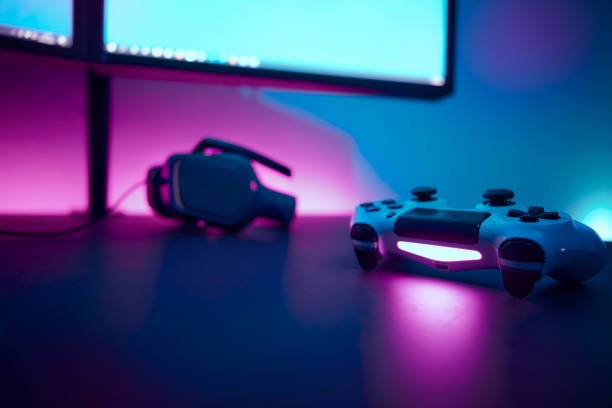Is 165Hz Good for Gaming
Users searching for gaming monitors will wonder [ Is 165Hz Good for Gaming That’s why we must ask where 165 Hz stands and if is it higher than regular 60 Hz and lower than high standards of 240 Hz and even 360 Hz displays. Is it a worthy upgrade? Will it improve your gameplay? Is it the $.01 that I am cherishing or is it just another digit that has got some value written on a box? Is it a worthy upgrade? Will it improve your gameplay? Does the monetary value I hold dear belong on the box or does it represent the exact number of cents written on it?

The article presents the complete essential information about 165Hz Monitors that concern gamers. This guide serves to assist you regarding your decision about moving forward to 165Hz because it can improve your gaming experience regardless of your FPS or open-world preferences.
What Does 165Hz Mean in Gaming?
A short explanation of refresh rate comes first for a better understanding before discussing how useful 165Hz is for gaming purposes.
A refresh rate describes the number of times the monitor screen updates its content per single second. The screen update happens 60 times per second when the monitor operates at Hertz frequency. A 165Hz monitor does it 165 times. By boosting its per frame rate up to almost three times the original value the screen displays motion with superior sharpness and reduced jerkiness while showing greater clarity.
Therefore, to 60Hz or even 120Hz? Definitely. Implementing a higher refresh rate together with improved response along clarity will deliver exceptional gameplay experience in games like first-person shooters including VALORANT, Call of Duty, and Fortnite.
The Competitive Edge of 165Hz
People who switch from a 60Hz display to a high refresh rate model would immediately detect the smooth motion. Baton presents precise movements with decreased input delay and connects aiming motions with enhanced natural cadence during all motions and movements.
Human nature drives us to investigate the fundamental question of our existence yet again: Is 165Hz Good for Gaming? Competing players should benefit from BMA according to the provided information. The realistic presentation of visuals creates a chance for better performance though you never acquire superhero abilities. Superior refresh rates lead to enhanced abilities for proper racer overtaking along with better timing capabilities higher recognition speed and smoother target acuity.
The refreshing rate of 165Hz splits the difference perfectly between 144Hz and 240Hz. The gameplay experience provides smooth motion without requiring high GPU utilization that 240Hz or above would need.
165Hz vs. 144Hz – Is It Worth the Jump?
The following parts of this discussion become considerably more captivating. Most monitor users know about 144hz screens because they cannot detect the 165hz promotional claims. A gamer who develops frame timing sensitivity will find the difference between 144 and 165 Hz monitors usable even though it remains small.
So Is 165Hz Good for Gaming when compared to 144Hz? It can be. Making the jump from 60Hz or 75Hz to 165Hz refresh rate will bring you exceptional satisfaction with the improvement in refresh rate. At that price point you should spend the money on a slightly faster refresh rate since it provides greater improvements after 144Hz.
Can Your PC Handle 165Hz?
A modern gaming rig needs to face incredible stress before reaching 165 frames per second in most modern games while the possibility of attaining that speed every time seems impossible at best. People should analyze their GPU and CPU capabilities before making a hasty decision to buy high-refresh monitors.
A typical computer setup suffices to reach 165 frames per second in games including CSGO and Rocket league as well as over watch. Most players need to modify settings in Cyberpunk 2077 or Hogwarts Legacy using technologies like DLSS or FSR to achieve 60 frames per second.
Achieving between 100 and 144 FPS result in much better comfort so the 165Hz monitor will provide clear motions than screens operating at 60Hz or 75Hz. So again, Is 165Hz Good for Gaming with your current setup? The answer is most likely yes when you seek more desirable visual outputs and fluid interactions.
If you observe typical gameplay conditions then the value of 165Hz stands out to your senses.
My experience with multiple gaming monitors from 60Hz to 120Hz, 144Hz, 165Hz, and 240Hz gives me the certainty that 165Hz delivers real-time gaming benefits.
Using a display which operates at 165Hz gives you a playing experience that erases blurry screen effects. With this refresh rate your enemy tracking becomes easier while response times improve and gameplay becomes more responsive throughout the game. What you perceive stems from what you see while meeting new people.
Moving onto football betting brings other features yet these elements prove useless to professional athletes because the tested method delivers effective betting strategies even to occasional bettors.
Trustworthiness of 165Hz Monitors
Leading technology companies like ASUS, LG, Dell, and Acer among others have launched 165Hz monitors with excellent panel quality and low response rates together with G-Sync and Freesync functionality. These displays deliver quick performance whenever combined with a vivid display option designed specifically for gaming.
These monitors were designed to deliver dependable precise performance through various game genres including racing car drifting games first-person shooters and Role Playing Games. Therefore 165 Hz monitoring can enhance the quality of every gaming genre.
Who Should Buy a 165Hz Monitor?
The group that obtains the greatest value from 165hz operation remains unknown.
Competitive gamers: Every millisecond counts.
Streamers need smooth movements for their stream presentations and viewers prefer quick movements from streamers.
Occasional gamers choose video games because these titles deliver the ideal gaming experience at the same time.
Players who move from 60Hz or 75Hz play experience an intense shock when they shift to this monitor.
People from the mentioned groups can find the 165Hz refresh rate suitable for gaming purposes and worth investing in.
Are There Any Downsides?
The mentioned advantages of 165Hz monitors come at a cost as explained below. Strong graphic cards become necessary to reach such frame rates which games typically require in current gaming settings. EXTRA fast refresh rates cost slightly extra money alongside their increased functionalities.

Information technology has reduced the price of affordable 165Hz displays so people in the market can integrate them based on their requirements. Many such displays come with pricing comparable to or below existing 144Hz models. The combination of quick speed and reasonable price makes 165Hz appropriate for gaming purposes.
Final Verdict: Is 165Hz Good for Gaming?
The 165Hz monitor excels in all key gaming characteristics of performance and feels together with real-world usability and interface partnership. This monitor delivers exceptional speed combined with quickness and it occupies an excellent position in the crossover region for affordable high-quality products.
Seeking a monitor that delivers high future potential at an affordable price then a 165-Hz display would be an optimal choice. The upgrade enabled by 165Hz surpasses 240Hz refresh rates without causing severe GPU performance degradation.
The accessory in the 2025 gamer world would be defined as light, fast, and functional according to most people.
FAQs
Is 165Hz better than 144Hz?
There exists a difference although it is not a major significant one. During purchases of a new gaming monitor at similar prices it is advisable to choose 165Hz. Use of 165Hz provides the advantage of smoother motion and improved setup security for possible future developments.
The necessity of a 165Hz refresh rate exists only when casual gamers demand it.
You would see the minimum difference from 165Hz but the smooth movement together with minimal input delay would provide better performance. People who enjoy crisp images with flowing motion would find 165Hz suitable for gaming purposes regardless of their gaming level.








